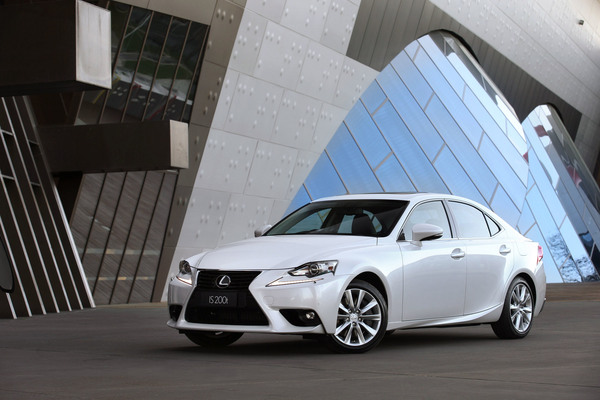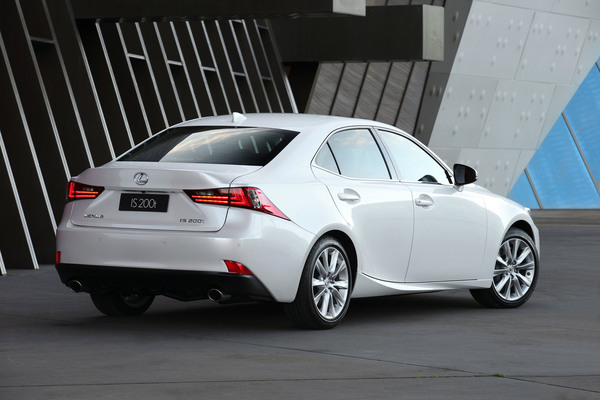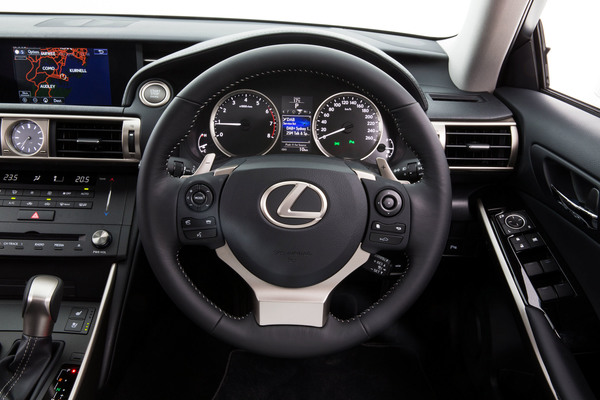By DEREK OGDEN
THE Lexus IS 200t is a success on many levels.
Pricewise it’s positioned between the upper medium passenger sedan and lower premium car market and it performs like a luxury sedan or a spritely sports coupe depending on how the driver sets up the controls.
Finally, the IS 200t offers a level of comfort and convenience normally found in vehicles positioned well into the luxury car market.
A replacement for the IS 250, sharp prices characterise the IS 200t range which consists of three variants – Luxury, F Sport and Sports Luxury, coming to the market at $64,041, $73,055 and $84,385 respectively, on the road.
One of two comprehensive Enhancement Packs can be added to the Luxury and F Sport models with a corresponding cost increase.
The test vehicle, for example, the IS 200t Luxury, included the Enhancement Pack 1, which adds an electric tilt and slide moonroof, upping the price to $66,870 on the road.
Lexus throws down the gauntlet to rivals with the IS 200t bringing a stack of standard luxury features including pre-collision safety, active cruise control, reversing alarm, rain-sensing wipers and power adjustable steering column.
The new Lexus IS models feature a continuation of the classic IS lines – sporty yet stylishly laid back.
The signature Lexus spindle grille has evolved with a three-dimensional design and a chrome-plated frame and darker grey insert from top to bottom.
Front-on the view is complemented with Bi Xenon HID low/high beam headlamps with LED daytime running lamps.
In profile, the car is characterised by a line which takes off to match those of the rear taillight unit.
The rear, once again, has a wide, sporty stance, emphasised by a trapezoidal design beginning between the inner section of the tail light units and flaring out towards the side sections of the bumper.
The driver-oriented cockpit design was inspired by that of the Lexus LFA supercar with the dashboard divided into a display zone and an operation zone to offer drivers more comfortable, ergonomic interaction with the vehicle’s control systems.
Soft-touch finishes can be found throughout, including padding on the centre console sides, while a piece of premium automotive embellishment is the silver metallic trim analogue clock with surface self illumination.
Generous 480 litre boot space is greatly enhanced by standard 60:40 split-folding rear seats.
The touch-sensitive Lexus Remote Touch controller is positioned close at hand on the centre console and is the contact with many of the IS 200t convenience systems including satellite navigation and reversing camera.
Lexus Enform enables mobile connectivity to a variety of services such as advanced Bluetooth with music streaming and phonebook, while dual-zone automatic climate control is operated with new touch-sensitive electrostatic switches.
The engine is taken from the NX 200t compact sports utility vehicle, the 2.0-litre, four-cylinder turbocharged unit switched through 90 degrees to face north-south, and hooked up to the rear wheels via an eight-speed Sports Direct Shift automatic transmission.
With help from a revised exhaust system layout, it comes up with 180 kW, 27 kW more than the IS 250 V6 it replaces, and better than some of its close European rivals.
The highest strength tensile steel body structure, together with 10 airbags, helps provide excellent occupant protection.
Pre-Collision Safety System with Active Cruise Control are now standard on all models, while Blind Spot Monitor and Lane Departure Warning come on F Sport with option pack 2 and Sports Luxury models.
The IS platform has been reworked to deal with the characteristics of turbo power as opposed to the previous naturally aspirated unit.
The powertrain is well matched with the chassis, providing sharp steering, with the body rigidity helping maintain suspension control over varying road conditions.
Off the mark, the IS 200t is at the mercy of the turbo, which only comes into its own under heavy pedal pressure, urging the engine on to high revs.
There’s a non-intrusive growl, while an enhanced driving experience has been dialled in with auto-blip downshifts.
All models exhibit the cabin tranquility for which Lexus has become well known due to the company’s long-running battle against engine noise and vibration, although road noise does intrude on rougher road surfaces all too familiar in Australia.
Advanced automotive technology has been put to work with fuel economy, while stop/ start engine function, for the first time in a Lexus, helps with fuel savings in congested traffic.
Further savings can be made by locking in the transmission’s Lexus Drive Mode Select function to Eco as opposed to Normal.
Under normal circumstances the test vehicle consumed 12 to13 litres per 100 kilometres on a day-to-day city commute and 5.5 litres per 100 kilometres at motorway speeds.
The IS 200t is Lexus’s latest entry-level to its rear-wheel drive sports sedan line-up, which includes the GS and flagship LS lines, and together with an extended dealer network, is aimed at meeting demand for entry into the luxury vehicle market.
Model range
Lexus IS 200t Luxury automatic sedan: $64,041
Lexus IS 200t Luxury + Enhancement Pack: $66,870
Lexus IS 200t F Sport automatic sedan: $73,055
Lexus IS 200t F Sport + Enhancement Pack 1: $77,176
Lexus IS 200t F Sport + Enhancement Pack 2: $79,235
Lexus IS Sport Luxury automatic sedan: $84,385








